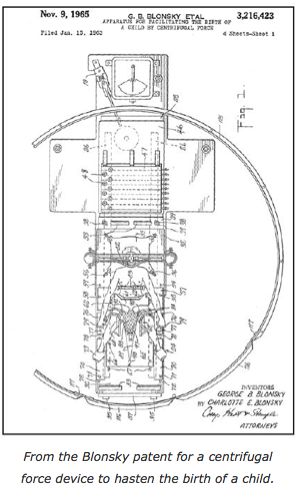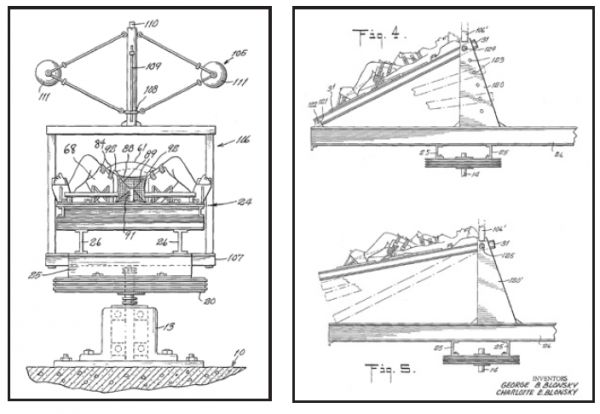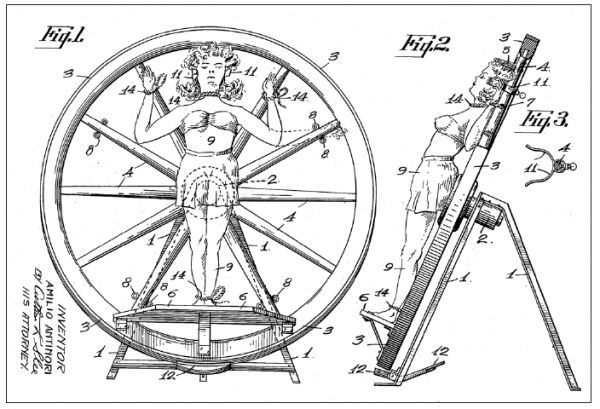
by Alice Shirrell Kaswell
The
Blonsky centrifugal-force birthing device has proved an inspiration for
many people for many purposes. This is a brief, partial survey of some
of their ideas.
The Blonsky Device
 In 1999, an Ig Nobel Prize in the field of
managed health care was awarded posthumously to George and Charlotte
Blonsky of New York City, N.Y., and San Jose, Calif., for inventing a
device (U.S. Patent #3,216,423, for an “apparatus for facilitating the
birth of a child by centrifugal force”) to aid women in giving birth.
The woman is strapped onto a circular table, and the table is then
rotated at high speed. The Blonskys’ niece, Gale Sturtevant, came to the
Ig Nobel ceremony and accepted the prize on behalf of George and
Charlotte (for details, see the January–February 2000 issue of AIR). In
2013, the Ig Nobel ceremony again honored the Blonskys, this time by
creating and performing an opera about them and their invention.
In 1999, an Ig Nobel Prize in the field of
managed health care was awarded posthumously to George and Charlotte
Blonsky of New York City, N.Y., and San Jose, Calif., for inventing a
device (U.S. Patent #3,216,423, for an “apparatus for facilitating the
birth of a child by centrifugal force”) to aid women in giving birth.
The woman is strapped onto a circular table, and the table is then
rotated at high speed. The Blonskys’ niece, Gale Sturtevant, came to the
Ig Nobel ceremony and accepted the prize on behalf of George and
Charlotte (for details, see the January–February 2000 issue of AIR). In
2013, the Ig Nobel ceremony again honored the Blonskys, this time by
creating and performing an opera about them and their invention.
The
Blonsky device was never used in an actual human birth, so far as we
have been able to determine. But it has not gone unnoticed.
Several
patents explicitly cite the Blonsky patent as one of the pillars upon
which their innovation is built. Some adapt aspects of or notions from
the Blonsky device for different purposes. Other aim to improve on one
or another aspect of the Blonsky achievement. And at least one earlier
invention seems, in a way, to hint at the coming of the Blonsky idea.
Pre-Blonsky Devices
A general-purpose centrifugal machine appears to foreshadow the Blonsky device, though Amilio speaks only of non-birthing uses.
Netorama has more


No comments:
Post a Comment